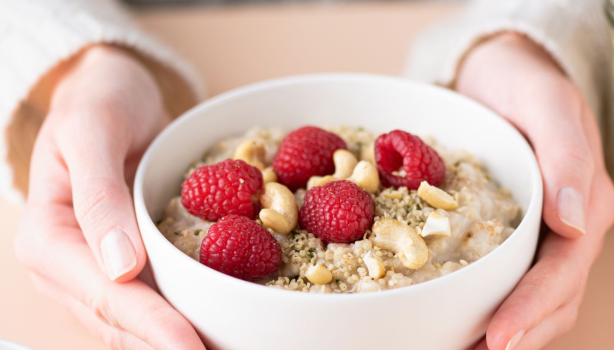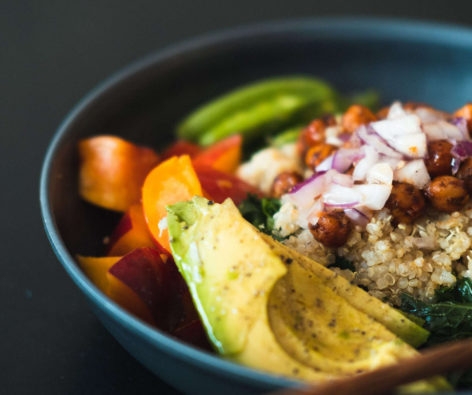
Fibre is an essential part of a healthy diet, yet many people don’t consume enough of it. It’s a type of carbohydrate found in plant-based foods, including whole grains, beans, fruits, vegetables, nuts, and seeds. Since the body can’t digest or absorb fibre, it moves through the stomach and intestines before being eliminated. Including more fibre in your daily meals is crucial for maintaining good health, and here’s how you can do it.
Types of Fibre
Fibre comes in two main types, each offering unique health benefits:
- Soluble Fibre: This type dissolves in water and forms a gel-like substance. It helps lower blood sugar levels and improve cholesterol. Foods rich in soluble fibre include citrus fruits, avocados, beans, lentils, peas, and oats.
- Insoluble Fibre: Unlike soluble fibre, insoluble fibre does not dissolve in water. It adds bulk to stool and helps move food through the digestive system, which can prevent constipation. Good sources of insoluble fibre include whole wheat products, potatoes, vegetables, nuts, and beans.
To reap the full benefits of fibre, aim for a balanced intake of both types throughout the day.
Benefits of Eating More Fibre
Increasing your fibre intake can have a profound impact on your overall health. Here are some key benefits:
- Increased Satiety: Fibre helps you feel full longer, which can assist with weight management.
- Improved Digestion: Fibre softens stool and helps prevent constipation and diarrhea by regulating bowel movements.
- Lower Cholesterol: Soluble fibre helps reduce “bad” LDL cholesterol levels, which is beneficial for heart health.
- Reduced Cancer and Cardiovascular Disease Risk: A high-fibre diet is linked to a lower risk of developing bowel cancer and cardiovascular disease.
- Better Blood Sugar Control: Fibre slows the absorption of sugar in the bloodstream, helping to regulate blood sugar levels—particularly important for those with diabetes.
Practical Tips to Increase Fibre Intake
Incorporating more fibre into your diet doesn’t have to be complicated. Here are some easy ways to do it:
- Opt for Whole Grains: Choose wholemeal bread, wraps, brown rice, wholewheat pasta, and grains like quinoa, buckwheat, and barley for a fibre boost.
- Add Beans and Lentils: Incorporate canned beans or lentils into your meals more often. Swap ground meat for beans in dishes like Bolognese, or toss chickpeas into salads and soups for added fibre.
- Enhance Breakfast with Fibre: Add fruit and a sprinkle of nuts or seeds on top of your cereal or oatmeal. Nut butter on oatmeal is also a tasty way to increase fibre. Look for high-fibre cereals made with whole grains listed as the first ingredient.
- Get Creative with Vegetables: Sneak extra vegetables into your meals. You can blend peas and broccoli into a pasta sauce or roast mixed vegetables with garlic, paprika, and cumin to serve alongside your favourite protein.
- Eat the Skin: When preparing vegetables like potatoes, keep the skin on. The skin contains a significant amount of fibre.
- Bulk Up Meals with Veggies: Dishes like curry or chilli can easily be made more fibre-rich by adding extra vegetables such as carrots, peas, aubergine, or sweetcorn.
- Snack Smart: For a healthy snack, try fruit with a handful of nuts or nut butter—apple with peanut butter is a great combo. You can also enjoy vegetable sticks with hummus, which contains chickpeas for an extra fibre boost. Other fibre-rich snacks include whole grain crackers with hummus or popcorn.
A Gradual Approach to Fibre
If you’re not used to eating high-fibre foods, it’s important to increase your intake slowly. A sudden spike in fibre can cause gas or cramps, so give your digestive system time to adjust. Also, drink plenty of water throughout the day to help your body absorb the fibre and avoid constipation.
Conclusion
Boosting your fibre intake is an easy and effective way to improve your health. By making simple swaps in your meals, like choosing whole grains, adding beans and lentils, and incorporating more fruits and vegetables, you can easily hit your daily fibre goals. Start gradually, stay hydrated, and enjoy the many health benefits of a high-fibre diet.










